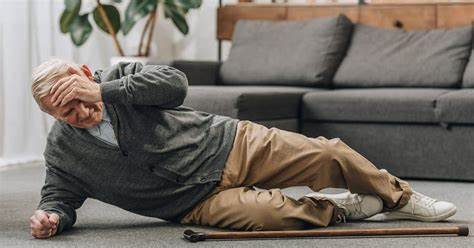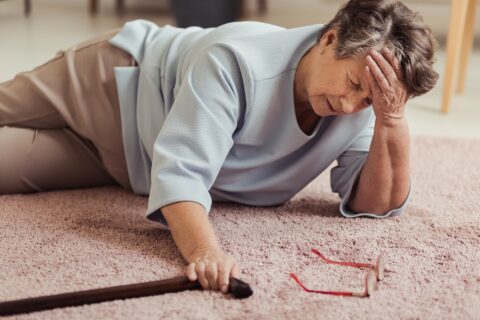4 Tips for Fall Prevention
Every year, over 25% of adults aged 65 and older experience a fall. Falls not only increase pain, but also increase your risk of future falls, and can even end in hospitalization! Hospitalizations following falls account for $50 billion of annual health care costs. To reduce your risk of falling, follow these four simple steps!
1. Talk to your doctor
Medications used to treat high blood pressure, epilepsy, fibromyalgia, depression, insomnia, and pain can cause dizziness as a side effect. If you’ve been feeling dizzy, talk to your primary care provider about any medications you’re taking. Your doctor will tell you if dizziness can be caused by any of your medications, and help you create a regimen that works for you!
2. Step properly
Up until recently, you probably walked around your home and town with little thought. Now, it’s important to focus when you walk. Lift your foot off the ground completely with each step. Lean slightly forward with your knees bent to maintain your center of balance. If your doctor has prescribed a mobility aid such as a cane or walker, continue to use it at all times!
3. Make your home safer
There are many steps that can be taken to prevent falls around the house. Remove clutter from the floor to prevent tripping. This could include rugs, clothing baskets, or dog toys. Keep your house well-lit and add railings along stairs to maintain balance when traversing floors.
4. Keep moving
While it may sound counterintuitive, staying active can play a huge role in preventing falls. Many falls are the result of muscle weakness and balance issues, both of which can be resolved with regular physical activity. If you struggle with balance, you may not feel comfortable exercising on your own. If that’s the case, physical therapy is a great choice! Your physical therapist can create a custom exercise program to increase your strength and balance and will be by your side to make sure you don’t fall.
Final Thoughts
To maintain your independence and feel your best, taking a few simple steps towards fall prevention can go a long way! Knowing that you’ve taken the proper precautions will give you the confidence needed to move safely and freely.
References:
Florence CS, Bergen G, Atherly A, Burns ER, Stevens JA, Drake C. Medical Costs of Fatal and Nonfatal Falls in Older Adults. Journal of the American Geriatrics Society, 2018 March, DOI:10.1111/jgs.15304


